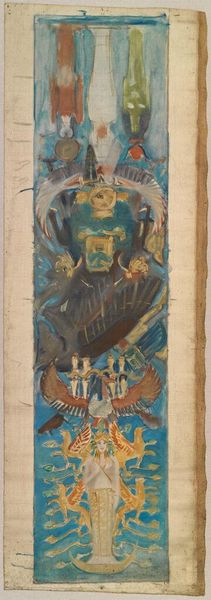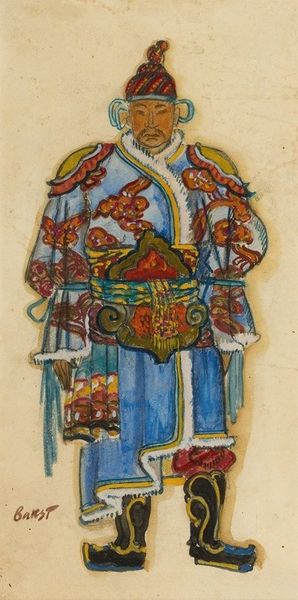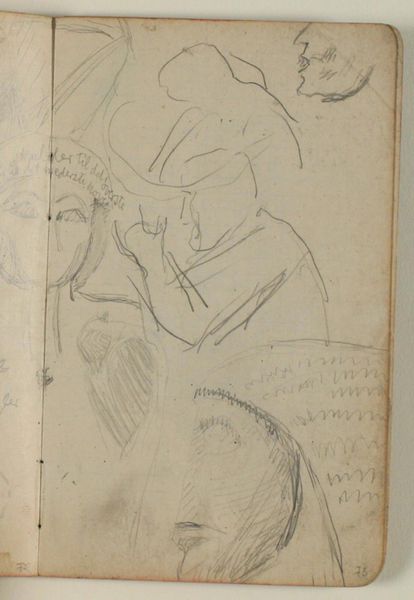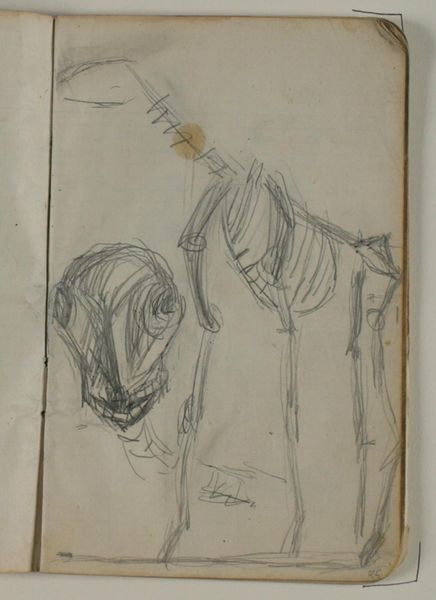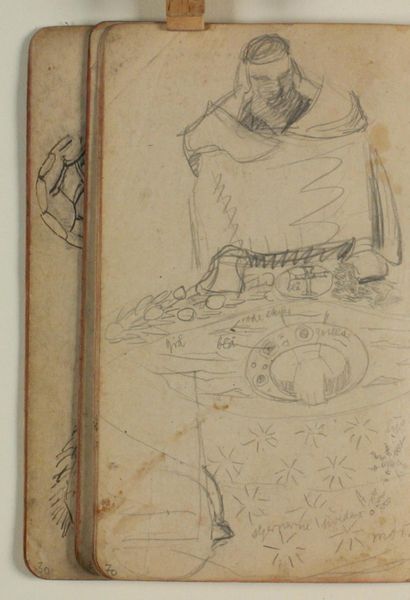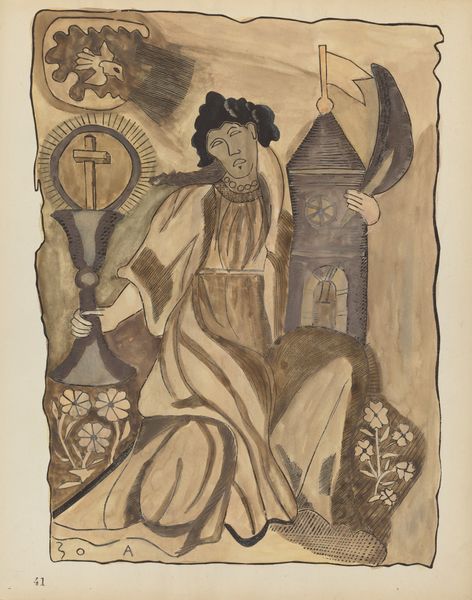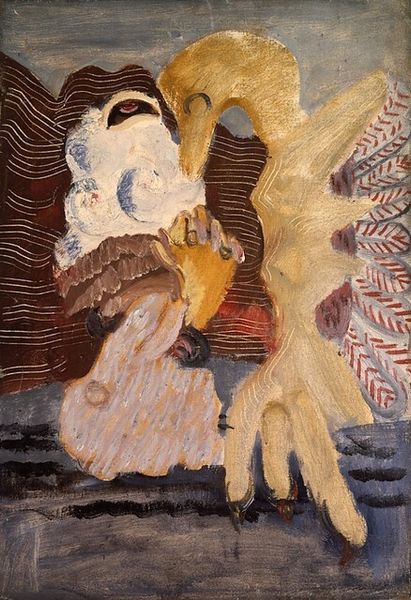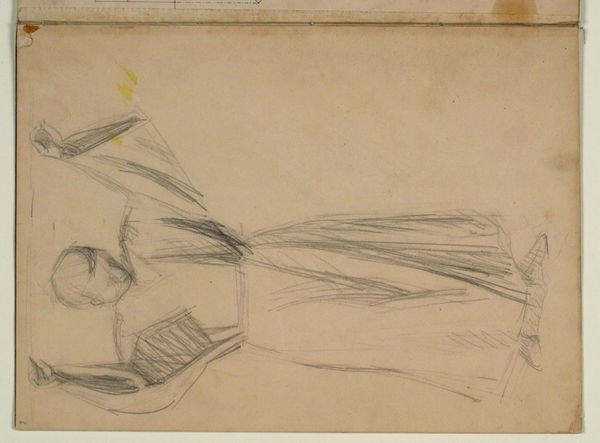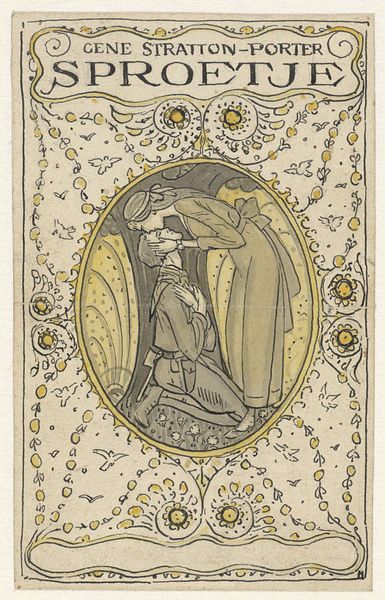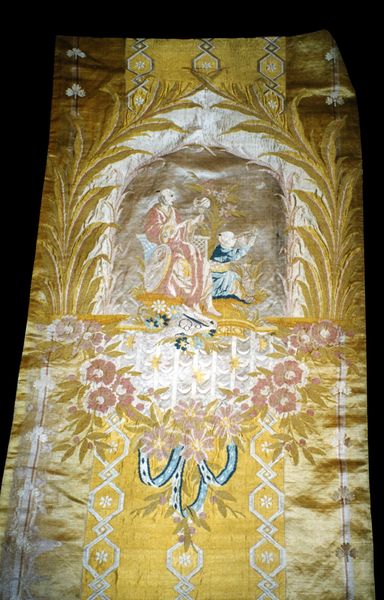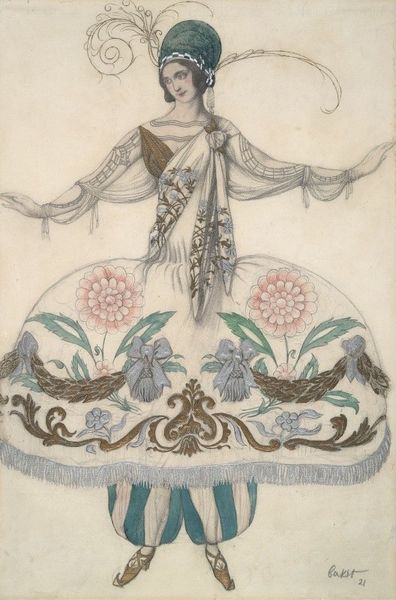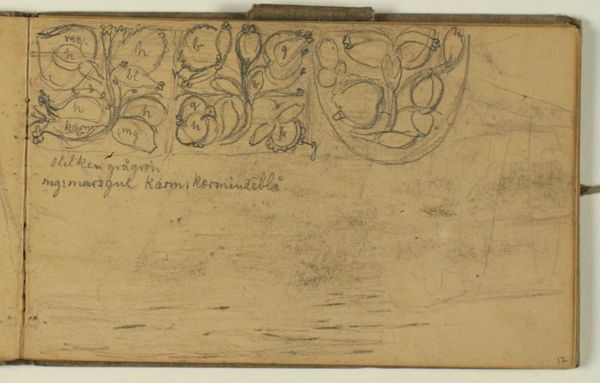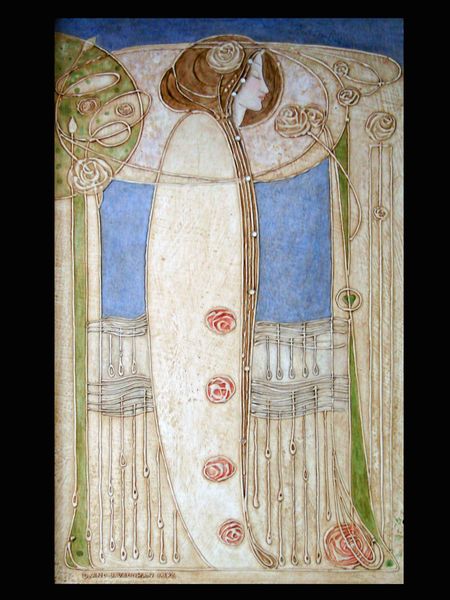
Studier af figurer fra vægdekoration (italiensk). Notat 1900 - 1905
0:00
0:00
drawing, coloured-pencil, watercolor
#
portrait
#
drawing
#
coloured-pencil
#
water colours
#
figuration
#
watercolor
#
coloured pencil
#
history-painting
#
academic-art
#
watercolor
Dimensions: 204 mm (height) x 260 mm (width) x 13 mm (depth) (monteringsmaal), 204 mm (height) x 260 mm (width) (billedmaal)
Curator: This work is titled "Studier af figurer fra vægdekoration (italiensk). Notat," which translates to "Studies of figures from wall decoration (Italian). Note." It's attributed to Niels Larsen Stevns, created sometime between 1900 and 1905. The medium appears to be watercolor and coloured pencil on paper. Editor: The overall impression is ethereal and dreamlike. The washes of color are gentle, giving it an almost fresco-like quality, despite being on a much smaller scale. I wonder, who are these figures and what stories do they tell? Curator: Given the artist and period, I'd venture to say these are studies of classical or Renaissance-era frescoes. Stevns was very interested in public art, and how painting could ennoble civic life. The medium used emphasizes this, too. Editor: It’s interesting how the loose watercolor sketch is framed by these precisely rendered floral ornaments in gold, creating this tension between freedom and constraint. This stylistic opposition seems relevant. Gold carries connotations of wealth and status and contrasts so starkly with the watercolours; they are used to create history, while watercolour as a medium has a domestic sensibility. Curator: That juxtaposition is insightful. Stevns might have seen those historical styles as frameworks for his own artistic expression, trying to forge a link between past and present. There seems to be a resurgence of interest in public murals around the turn of the century, and in art's potential as a form of public address and propaganda. It reflects the changing nature of civic identities and engagement with the wider public through images. Editor: Perhaps this serves as a meditation on legacy itself—the attempt to capture a fleeting image, and give it both cultural permanence and enduring psychological weight. The floral elements create the cultural continuity and connect contemporary eyes to history through a universal appeal for beauty and balance. Curator: A beautifully articulated point. Seeing these figures through that lens offers an interesting point to contextualize not just Stevns' practice, but of artistic creation. Editor: It really causes one to consider the nature of time and inspiration; both past, and still relevant today.
Comments
No comments
Be the first to comment and join the conversation on the ultimate creative platform.
